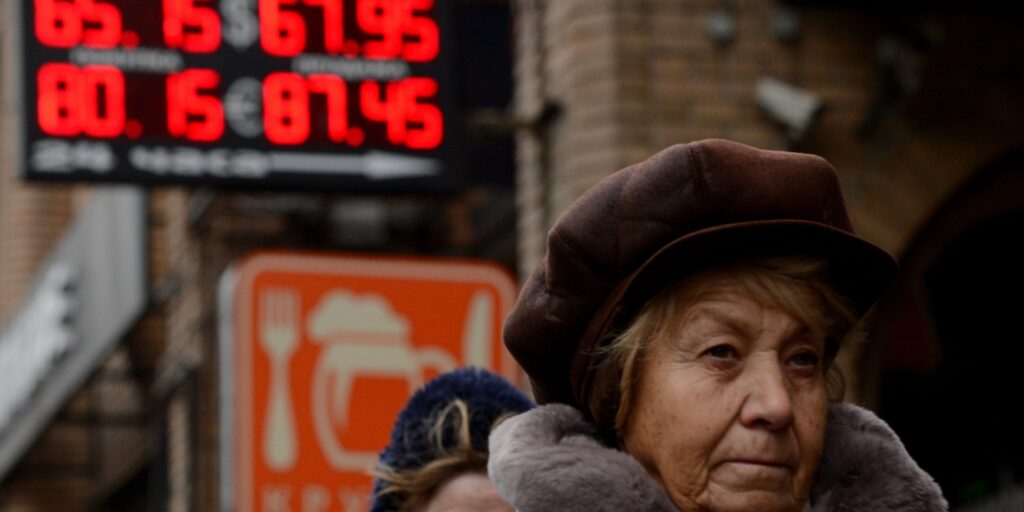- The ruble extended a sell-off on Monday, dropping to the lowest level against the dollar since 2022.
- Investors were spooked after new sanctions were imposed on Gazprombank.
- Tensions with the West, meanwhile, spiked after Russia launched a hypersonic missile against Ukraine.
Russia's currency has dropped to its lowest level in more than two years against the dollar in the wake of new sanctions and soaring geopolitical tensions.
Russia's ruble continued to weaken against the dollar on Monday, trading at 104 against the greenback. The currency is now at its weakest level versus the dollar since March 2022, when Russia first began its invasion of Ukraine.
Investors were spooked after the US imposed fresh restrictions on Russia's Gazprombank on Thursday, which, up until last week, had been the last major Russian bank that hadn't yet been blacklisted by the US.
The new restrictions limit Gazprombank's ability to participate in global financial trade and also prevent the bank from handling transactions related to energy trade, meaning European customers are unable to pay for Russian gas.
The latest restrictions are adding to concern over Moscow's weakening economy, which has been battered by Western sanctions since the start of the Ukraine war. Russia's energy revenue fell by nearly a quarter last year, thanks partly to Western trade restrictions including a $60-per-barrel price cap on Russian oil.
The ruble's decline was also fueled by Russia firing a new hypersonic missile in Ukraine on Thursday, a retaliatory measure after Ukraine fired US- and British-made missiles into Russia earlier in the week.
Russia's new missile, which Putin called the "Oreshnik," is adding to geopolitical fears abroad, with the missile possibly being used to signal a nuclear threat, military researchers said.
The ruble-dollar exchange rate has fallen 14% this year, thanks partly to Russia's long list of economic concerns. Despite high interest rates, which typically boost of value of a nation's currency, inflation continues to soar in Moscow, while long-term growth prospects look weak. Some economists have also predicted that the country could be on track to enter a period of stagflation, a situation where inflation remains high and growth stagnates.
